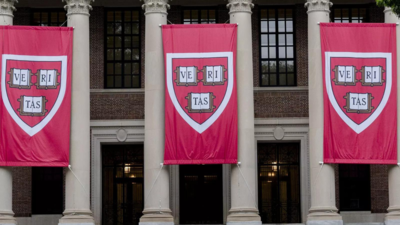Harvard to phase out combined engineering masters routes: Here is what will change

Harvard’s John A. Paulson School of Engineering and Applied Sciences (SEAS) will phase out its concurrent bachelor’s and master’s degree programs in Bioengineering, Electrical Engineering, and Materials Science and Mechanical Engineering, starting with the 2025–2026 academic year.The move follows internal faculty decisions in each department to steer students interested in intensive engineering study toward the Bachelor of Science (S.B.) degree, rather than the Bachelor of Arts (A.B.) combined with a Master of Science (S.M). This decision means that students in the class of 2027 and beyond will no longer be able to apply for the A.B./S.M. dual-degree track in these fields. Current students already enrolled in the programs will, however, not be affected.The change comes a year after SEAS paused A.B./S.M. admissions in Computational Science and Engineering, and marks a continued shift in how the school is structuring its academic pathways.Despite the phase-out, the concurrent master’s programs will remain available in Applied Mathematics, Applied Physics, Computer Science, and Environmental Science and Engineering.
What was the A.B./S.M. program?
The A.B./S.M. program allowed Harvard undergraduates to pursue a graduate-level Master of Science from the Graduate School of Arts and Sciences alongside their Bachelor of Arts. Students typically applied by the fall of junior year and, if accepted, took graduate-level courses while completing their undergraduate degree—all within four years.This unique opportunity gave students the ability to combine a broader liberal arts education with early entry into graduate-level engineering coursework, offering both flexibility and academic acceleration. It was especially attractive to students interested in combining interdisciplinary studies with rigorous technical training, without extending their time at Harvard.
What’s changing and why
Starting with the 2025-26 academic year, SEAS will no longer accept A.B./S.M. applications in the following three engineering fields:
- Bioengineering
- Electrical Engineering
- Materials Science and Mechanical Engineering
As reported by the Harvard Crimson, the decision was made at the departmental level, with faculty citing the desire to guide students toward the S.B. degree, which emphasises a more intensive engineering curriculum and aligns more closely with professional and academic standards in the field.The A.B./S.M. tracks had seen very low enrolment in recent years—fewer than 10 students are currently enrolled in total across the three programs. In contrast, 56 students graduated with S.B. degrees in 2024 alone.
What this means for future students
While current A.B./S.M. students will not be impacted, the phase-out removes a flexible academic option for future undergraduates.The A.B./S.M. route enabled students to pair a liberal arts education with an accelerated master’s credential—an attractive proposition for those seeking both breadth and specialization. Without it, future students may face a more rigid choice between the broader A.B. path and the highly technical S.B. program earlier in their college careers.There are also concerns about equity and access. The concurrent degree allowed students to earn a master’s without extending their time at Harvard—offering both time and cost savings. For students from lower-income backgrounds or those looking to enter the workforce quickly, the A.B./S.M. was a rare opportunity to gain advanced qualifications affordably.Still, SEAS continues to offer standalone master’s and Ph.D. programs through the Graduate School of Arts and Sciences. The school also indicated it will continue to support and potentially expand concurrent master’s pathways in select disciplines, including Computer Science and Applied Math.





